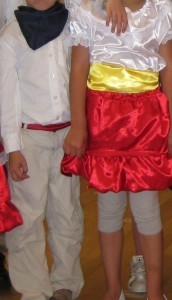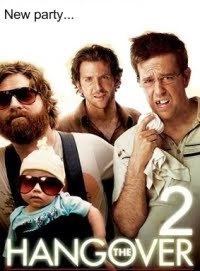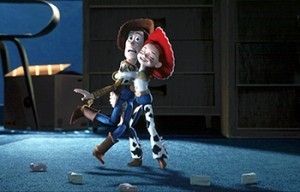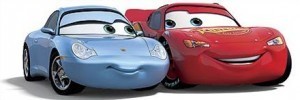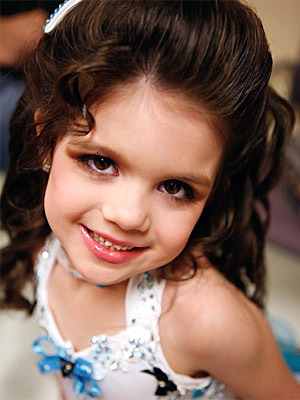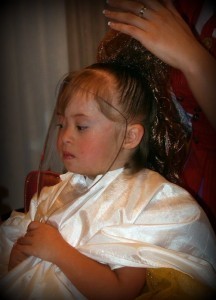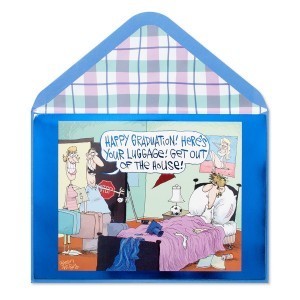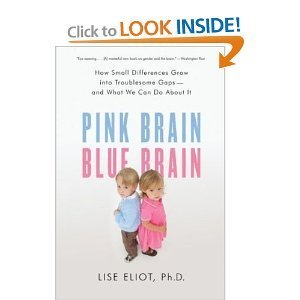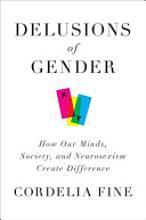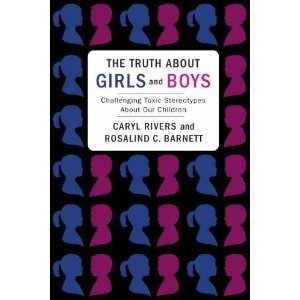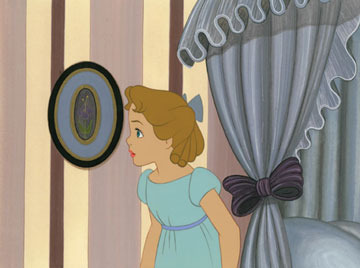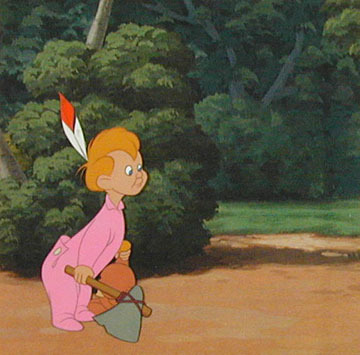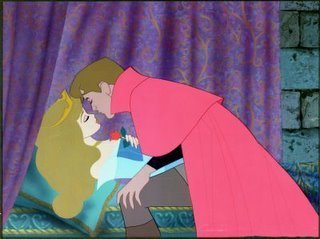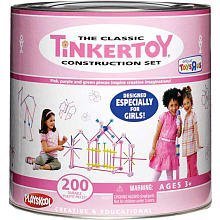Peggy Orenstein's Blog, page 12
June 13, 2011
It's A Mixed Up, Muddled Up, Shook Up World….
Great piece in Friday's NY Times on elementary school kids who want to wear clothing considered to be for the other sex and how parents handle it. As it happened, the Spanish Dance performance for the 2nd & 3rd years at Daisy's school was that morning. Here are the costumes the kids wore:
Seems pretty obvious that the one on the left is the boys' while the one on the right is the girls'. But it wasn't presented that way. The kids were told there were two costume choices and they could wear whichever they liked. A few of the girls picked the khakis. One of the boys chose the skirt and top. Of course, no one said much about the girls choosing khakis. But here is what the one of the teachers wrote me about a boy choosing to wear "girls" clothing:
We work hard to bust up stereotypes – these things don't just go away on their own. We talked to the Spanish teacher and let her know that we would be presenting the costumes as two options. I had a conversation with the class about [the boy's] choice and that it was right for him and that our job was to be supportive and to have his back. I also let the other 2-3 teachers know so that they could do the same. Our class totally rose to the occasion and when someone was laughing and pointing, a classmate put his arm around [the boy in the skirt] and pulled him close and said, "Don't listen to them." a gem of a moment for sure! We also talked with the boy himself and said that when you make a decision that people are not used to, it can draw attention. We let him know if anything came up that he felt uncomfortable with or couldn't handle, that we were there to help. Big, important and sometimes tricky stuff!
One could argue that by having one standard unisex costume the whole issue might have been avoided, but this turned out to be a great lesson for our school community–students, teachers and parents alike.
It also occurred to me that dancing by default with opposite sex partners for Square dancing or other folk dancing might be something to reconsider. It reinforces that contact with the other sex should be in this realm of "opposite" which encourages the stigma around "liking" one another and decreases the possibility of real friendship at that age. It assumes heterosexuality. It denies the spectrum of choices these kids will some day express gender identity (or are expressing now). Another way to go would be to have children either choose partners of either sex or simply assign them randomly.
Or, you can kick up a huge, ahistorical fuss when a little boy wants to paint his toenails pink……
June 9, 2011
Why Won't Boys Won't Watch Movies About Girls?
Getting over-excited about all the fab comments on my last post re: why bringing up Jessie in Toy Story is not an adequate comeback for "why hasn't Pixar made any movies about women?" Thank you guys for such a wonderful conversation.
One commenter (in fact the one who inspired the post–so double thank you!) asked about the idea that boys won't watch movies about girls. And added it's not like 5 year old boys are taking themselves to the movies (though they do have OPINIONS, believe me). But yes, conventional Hollywood wisdom is that boys won't watch girl protagonists. And every time a movie about a woman or girl fails or under-performs at the box office that is reinforcement. While if a movie about a woman succeeds it tends to be regarded as a fluke. Going to movies with female leads becomes a sort of political statement–hence the hubbub around the first Sex & the City movie as well as about the current film, Bridesmaids.
In CAMD I talk about how that boys-won't-watch girls was disproved on TV by Nickelodeon, first with "Clarissa Explains it All" and later with "The Amanda Show" and iCarly. I'm not endorsing those shows, I'm just saying. They have had a fairly equal number of male and female viewers. So when left to their own devices at home on TV, boys apparently WILL watch girls.
And yet. Hollywood retains this belief, this core tenet. And for goo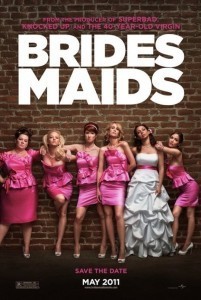 d reason, I guess.Take Bridesmaids which its first weekend in release made $26.2 million in 2,918 theaters–an average of $8,995 per screen.
d reason, I guess.Take Bridesmaids which its first weekend in release made $26.2 million in 2,918 theaters–an average of $8,995 per screen.
Meanwhile, Hangover 2 made $85.9 million its first weekend on 3,615 screens–an average of $23,775 per screen.
Sigh. (Though congratulations to fellow Oberlin alum Ed Helms!)
Not that it's entirely Hollywood's fault. We condition boys from the earliest ages AGAINST seeing female experience as equally universal or relevant to them as males'. Even when we're well-intentioned. Years ago, I was asked to write a jacket quote for a book for parents that listed children's books with strong, adventurous complex female protagonists for girls. It was a fine compendium, but I hesitated to endorse it. Why should great books about female characters be only for GIRLS? Shouldn't we be encouraging boys from an early age to read books with female protagonists too? Didn't this just add to the idea that male experience is universal but female experience is specific?
We teach our boys from the earliest ages that anything associated with the feminine is not for them and even "bad." Hello homophobia, misogyny etc etc. I mean, remember the insanity around that J. Crew catalog with the photo of the boy in pink nail polish? Puh-leeze!
In CAMD I cite the work of Isabelle Cherney who found that nearly half of boys ages 5-13 when ushered into a room and told they could play with anything chose "girl" toys as often as "boys" toys–provided they believed no one would find out. Particularly their fathers. The youngest boys said said their daddies would think it was "bad" if they played with "girls'" toys, even something as innocuous as miniature dishes. Boys were also more likelty to sort playthings based on how they perceived gender roles (such as "Dad uses tools, so hammers are for boys"), whereas girls figured that if they themselves enjoyed a toy–any toy–it was, ipso facto, for girls.
I take heart in thinking about a birthday party Daisy attended a few months back. The host was a boy, as were all the other guests aside from her. For an hour or so, they ran around the birthday boy's yard, shooting one another with nerf guns. Then they all jumped in the family van and headed off to see….Tangled. Maybe there is hope after all.
June 8, 2011
Pixar's Female Problem: Please Stop Asking Me, "What About Jessie?"
Awhile ago I posted some art for Pixar's upcoming film Brave, its first with a female protagonist. And, naturally, I pointed out that Pixar has seemed almost perversely incapable of creating a female protagonist and how utterly offensive that is since they've made films about
Anyway, among the comments someone inevitably asked "What about Jessie?
What about Sally in Cars?"
I started to answer and then realized this deserved its own entire post. So here goes.
Let me begin with this: if a studio as innovative as Pixar made 12–that's TWELVE– films with female protagonists and a few had perhaps 1 or 2 strong tertiary characters were who were male and maybe 1 in 10 male characters with ANY speaking parts at ALL wouldn't you think that was a teensy-weensy bit disproportionate, minimally a failure of imagination and maximally openly hostile in its dismissal of boys and men?
Would it feel an adequate comeback if I shrugged and said, well, there were kick-ass guy side characters who was love interests in one or two films. Jessie is great, yes she is. But guess what: THE FILM IS NOT ABOUT JESSIE. It's about Woody. And Cars is not about what the comment referred to as the "Spunky Attorney Car" (Jeez, does she even have a name)? It's about Lightening McQueen. It is NOT the same thing, and to even intimate that it is shows how inured you have become to the fact that female characters so rarely play the central role. We are happy with the crumbs of being "strong" but completely unnecessary (really) side characters.
In Pixar's films, maleness has consistently been presented as "universal" as neutral. while femaleness is singular, and–even when a character is "strong"–she is inevitably imbued with those particular stereotypically female characteristics: she is a love interest or a helper. She is caring. She checks out her butt in the mirror. It has never once been HER experience, HER feelings, HER complexity or crisis that drives the narrative. If it were the opposite and Pixar had NEVER made a film in which a male character's quest drove the story wouldn't you find that a smidge odd?
In a marvelous post on this subject which I have only just now found, the blog Vast Public Indifference , written by a former elementary school teacher, asks: Why did Remy HAVE to be a male rat? Couldn't Linguini have been female? What if Wall-E were a female robot? Or had no sex?
This blogger goes through every Pixar film, cleverly breaking it down for you so I don't have to. In fact, I'm just going to repost her rundown here (it's from 2008. so before Up and Toy Story 3) I wish I knew her name, but I hope that posting this with her blog linked above counts as giving her credit where it is amply due. She says:
Toy Story: This buddy movie revolves around the rivalry/friendship between two male characters, Woody and Buzz. Female characters: Andy's Mom, Bo Peep, Mrs. Potato Head, Sid's sister Hannah, Baby Molly (we're scraping the bottom of the barrel here).
Grrl Power score: 0/10. The women in this story are almost entirely irrelevant.
A Bug's Life: This adventure story concerns the efforts of a male ant (Flik) who sets out on an adventure to save the colony from the wrath of a grasshopper gang. Interestingly enough, real male ants do nothing but eat and fertilize eggs, so Pixar had to go out on a limb to make this character male. [note from me (Peggy)-I point this out ALL THE TIME. Any ant you see out in the world is female. Same with Bees. So that Jerry Seinfeld Bee Movie? All those bees would beeeee female. Not in this man's Hollywood, though. Transgender bees! What next?] Female characters: Dot, Princess Atta, The Queen, Gypsy, Rosie.
Gender Equity score: 1/10. This film gets points for having more than three female characters (out of a main cast of 17). Unfortunately, I had to deduct points for the writers' going out of their way to turn a female-dominated community into a male-dominated movie. To what end?
Toy Story 2: More Woody and Buzz. But now we have Jessie! Jessie is awesome and we love her. Too bad the story is still about Woody's existential crisis. Female characters: Jessie, minor toys (Tour Guide Barbie, Mrs. Potato Head, etc.), Andy's Mom.
Girls Rock score: 3/10. Jessie scores three points all by herself for being present, having a personality, and kicking ass. But the movie isn't about her.
Monsters, Inc.: Another buddy movie about two dudes, Mike and Sully. Female characters: Boo, Celia, Roz.
Feminist Statement score: 1/10. Boo is adorable and Roz turns out to be Agent 001 of the CDC. But seriously, what little kid loves to play with her Roz action figure?
Finding Nemo: Father/son bonding film featuring a male clownfish (Marlin) and his son (Nemo). I'm all for movies about fathers and sons and, in fact, this is my favorite of all Pixar movies. Still, Nemo doesn't put female characters front and center, and it probably shouldn't, considering the subject matter. If it were only one male-dominated movie in a well-balanced oeuvre, I wouldn't have a problem. Female characters: Nemo's dead mom (Coral), Dory, Peach, Deb, Darla.
Ally score: 2/10. Points for having an important female character. Not too many, though, since she is squarely in the selfless helper/moral center role. Should I give points for making 2 of the 8 fish in Nemo's tank female? Should I just be happy that any are female and not quibble on the 25% issue? Also, the elementary school teacher fish is male. Maybe because he's a science teacher.
The Incredibles: The story of Bob Parr's midlife crisis and how his family deals with it. Perhaps that's a little unfair — the whole family has problems that they work through in this film. Still, Bob's story drives the action. It's called The Incredibles, not Elastigirl Saves Your Whiny Ass. Female characters: Elastigirl/Helen, Violet, Mirage, Edna, Frozone's wife's disembodied voice.
Womanpower score: 5/10. Helen is a developed character with feelings and motivations. That gets us halfway there, even though almost all of the other superheroes are male (for no good reason).
Cars: Douchebag hotshot (male) racecar Lightning McQueen reenacts Doc Hollywood. I hated this movie. Female characters: Sally Carrera, Flo, Lizzie.
Girls Are Not Just Objects of Male Desire score: 0/10. Honestly, Wikipedia lists 15 residents of Radiator Springs. Three are female. Also, girls can't be on Lightning's pit crew, but they can be his silly, preening fans. Ye Gods.
Ratatouille: Male rat (Remy) dreams of becoming chef and achieves his goal even though movie sidetracks to cover ludicrous and unnecessary romance between humans part way through. This is the kind of shit that bothers me: Why is it important that the rat have a penis? Couldn't Remy have been written for a female lead? Why not? Collette's right — the restaurant business is tough for women, especially when even the fictional rat-as-chef barrier can only be broken by a male character. Female characters: Colette, that old lady with the gun, um . . . maybe some patrons?
More than a Token score: 1/10. ZOMG, we have one female character. We'd better make her fall inexplicably in love with the bumbling Linguini, stat!
WALL-E: Robot somehow acquires human gender characteristics, strives to clean up earth, goes on adventure to space. Why does WALL-E need to be male? Why does EVE need to be female? Couldn't they both be gender ambiguous and still fall in love? That would have been a bold move, but I think it's safe to say that Pixar is less than bold on the gender front. "Hey, guys, we have this robot with no inherent gender identity. We want to give it an arbitrary gender. Maybe we could make it female. Yeah, no, that would just just be ridiculous." Female characters: EVE, Mary, maybe some of the dead ex-captains of the Axiom
Challenging Gender Stereotypes score: 2/10. EVE is the competent scientist-bot. Still, making something that is inherently genderless male because male=neutral is bullshit.
This is where the blog post becomes out of date. She surmises (correctly) that Up will be "another buddy movie about two guys. See: Toy Story, Toy Story 2, Monsters, Inc." What she did not realize, of course, was that the only female character in the film died after the first 10 minutes. Nice. And of course there was Toy Story 3. Jessie is back, this time more actively girlie. And Barbie, though amusing, is Barbie. I imagine her score would hover around 3/10.
And that brings us up to Brave (I am ignoring Cars 2 for obvious reasons. I talk about Brave in CAMD. Maybe it will be a great film–it probably will be–but it still irritates me that a team as creative as Pixar's, which has imagined so many extraordinary male characters, can't imagine a female protagonist unless she's a bloody princess. On this one, Vast Public Indifference says:
OOOOOH! Somebody told Pixar that they needed to make a movie with a girl as the main character! So, duh, it's going to be 'Pixar's first fairy tale!!!' The main character will be, get this, a PRINCESS! But, since the Pixar people are probably good Bay Area liberals, I'm sure the princess will want to defy her parents'/society's expectations. Where have we seen that before, I wonder? No cookies for rehashing the same old shit. If we're super lucky, she won't marry the prince, which will allow us to cover the same ground that Robert Munsch and Free to Be You and Me covered in the goddamn '70s. Maybe it will be good, but no matter how good it is, it still PISSES ME OFF that girls get to be main characters only when they are princess (or marrying up the social ladder a la Belle and Mulan) in fairy tale worlds. Boys can be main characters anywhere, but if a girl is the main character, you can bet your ass it's a fantasy world. (Side note, as of 6/28/2008, the Wikipedia entry for this movie's premise begins, "In mythical Scotland . . ." Damn. I wanted to go to Scotland next summer.)
Please Don't Be Awful score: unknown, though the girl=fairy tale princess thing means they've got to work their way up from below zero in my book.
I suppose what makes me so mad is not that Pixar makes movies about male characters but that they seem to go out of their way to make sure that this remains the case…On several occasions (A Bug's Life, WALL-E), they have defied logic in order to make sure that the protagonist of their tale was male. When good female characters are part of the story (Elastigirl/Helen Parr, Jessie), they still focus on the male character's plotline and development. They make infuriating choices (female main character = princess in fairy tale). It's not just the stories they choose to tell, it's how they choose to tell them: in a way that always relegates female characters to the periphery, where they can serve and encourage male characters, but are never, ever important enough to carry a whole movie on their own shoulders. Unless they're, you know, princesses.
I love this woman.
June 7, 2011
Pageants, Princesses, Primping Parties?
As Toddlers & Tiaras revs up for its next season (and another post on that later) and the parental outrage machine gets cranking, I'd like to just redirect for a moment with this little game. Guess which of these photos is from that program, which is from the Bibbidi Bobbidi Boutique at Disneyworld (where for a mere $189 your 2-year-old can have a makeover that "magically transforms her into a Princess," which I guess is one word for what they turn your daughter into….) and which were taken at birthday parties from the Sweet and Sassy "a cutting-edge children's salon, trend-setting retail store and the perfect celebration place: that is popping up in mall stores around the country.
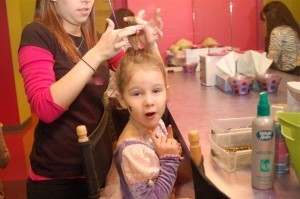
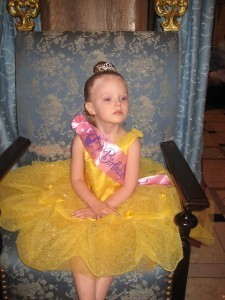
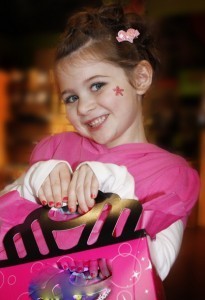
So tell me, why are parents up in arms about Toddlers & Tiaras but think the Bibbidi-Bobbidi-Boutique and Sweet and Sassy are cute?
(answers: pic one is from Toddlers & Tiaras; 2 is from Disneyworld; 3 is from Sweet & Sassy; 4 is from Disneyworld; 5 is from Sweet & Sassy).
June 2, 2011
Rape, Murder and Necrophilia–To the Beat.
Over on my facebook page, we're talking about the new Rhianna video, "Man Down," a catchy reggae-inspired tune about a young woman who kills her rapists then feels sort of bad about it.
I'm really torn about the video. Chris Sosa wrote a piece about it on Gather.com. On facebook he told me, "I thought it was a confusing video for a young audience. Disturbingly graphic, uncomfortable racial undertones, and most importantly, nothing for the young audience to take away from it. Jamaicans were posting on YouTube about the racial implications. And some posters were *blaming the victim* for the rape. If Rihanna wanted to address the issue, she could've done a much better job. Instead she went for "edgy." And the song itself doesn't even mention sexual assualt, it's just a wanton murder tale."
Another follower chimed in: "It strikes me that many popular videos involving male artists just show them being thugs who don't have to be justified to be cool (even though I personally find them offensive). But girls have to be good, even when they are bad. Rhianna has to be justified, preferably by an assault to her lady parts, in order to make her violence cool. Not that I want her to just be a gangster and just have a video be about that. I'd rather see her invent a new form of clean energy or something else admirable. But it seems to be a double standard."
But a third reader, Renee Randazzo brought up an intriguing post on the crunk feminist collective ("for hip hop generation feminists) that said, among other things: "In Hip Hop and pop culture where rape is glorified and celebrated, this is a welcome intervention. The video reinforces a very basic point: the choice to be sexual and sensual on the dance floor should not be read in any way as consent for future sexual activity. For once, the critique of rape is unambiguous. It is wrong; it is not the woman's fault; and it should be punished."
I find the issue confusing. I don't like the message that the way to be a strong woman is to resort to violence any more than I like that as the message of how to be a strong man. At the same time, there is so much graphic violence against women in videos and it's often how male artists signal that they are "rebellious" or counter-cultural. Treating women badly or dehumanizing them or even assaulting or murdering them is how male artists often get street cred and who complains?
A cbs news blog reported that a group called "Industry Ears" issued a statement that read, "If Chris Brown shot a woman in his new video and BET premiered it, the world would stop." Really? Did the world stop when Kanye West released his "Monster" video which started with a woman in lingerie hanging dead from a meathook in a slaughterhouse and continued with the artist (ahem) in bed with two other apparently dead women in lingerie posing them like sex toys?
Honestly? I couldn't get past the first 30 seconds or so. It made me sick. And I know that's what he wanted–to gain points with kids, especially young men, by provoking attack from women like me who suddenly seem straight, uncool and anti-sex (as if fetishizing the rape and murder of women to sell records has anything really to do with sexual empowerment).
My nephew loves Kanye West. What effect does that video–even if it is ultimately banned–have on him (beyond the obligatory shrug and eye roll when I ask him about it?). Especially troublesome given the statistics on rape on college campuses. I'm not saying a+b=c, but it's a culture, an environment, a dehumanization that is tagged as cool for guys.
So Rhianna made a shallow video about shooting a man, except in her case the shooting was not something she "wanted" to do–it didn't make her tough or cool and she was agonizing over it (rather than glamorizing it?). And she challenged the idea that being sexy and flirtatious makes her rape "okay."….So yeah, I get some of the objection. I get that it was confusing and provocative. I get that it was answering violence with violence (then again, have you heard "I Shot the Sheriff?" Not a great message either, but there was no video back then to bring it home). And ultimately, these days, it's so hard to determine a performer's sincerity because the music industry is so commodified and sales-driven that we'll never know if she was trying to make a flawed but authentic statement or if she was just going for shock to boost sales….
Thoughts?
May 31, 2011
Is Miley Teaching Your Daughter How to Be a Woman?
Interesting new study in the Journal of Children and Media: Female pop singers have a huge influence on how girls think about their feminine identity and sexuality, particularly girls ages 9-11. Not surprising, I guess, but it's worth noting that they report feeling "torn" between the "imperative" of "innocence and purity" vs "beauty and seduction." They were working that conflict out in their bedrooms, with friends, in public and "especially on the school playground."
Thanks to Yalda Uhls for alerting me to this one.
May 29, 2011
Sometimes I Wish These Things Didn't Bug Me So Much
I have a niece and a nephew graduating college this year and another niece and a God son graduating high school. That not only puts me on the hook for a fairly sizable chunk of change (thank you to our sibs for having a collective 10 children, by the way….Love them all madly!!!!) but four graduation cards. So off I went to Papyrus, which is based right here in the Bay Area, to see what I could find. There were a number of neutral cards (though the overuse of the word "awesome"–as in "I think therefore I am….AWESOME!" put me off so there was no way I'd by them). A certain number of pink cards because I this generation of graduates would be at the front end of the pink-is-the-only-color-girls-could-possibly-ever-want wave. Obviously, I wan't going to buy those. But here's what really got me: all the cards with pictures of actual PEOPLE on them showed males. Now, I see on their web site that there was ONE retro-looking card with a male and a female in cap and gown, but it wasn't in either of the TWO stores in Berkeley I went to. So if I wanted to buy my nieces cards with people on them, they would have to feature guys. They probably wouldn't notice, because they're probably, as females, used to the universal male. This was ESPECIALLY true for funny, slightly insulting cards like this one:
In a way, it's the inverse of what a marketer once called "the pink factor" in marketing to little kids–or, more specifically, their parents. If parents have a boy first they'll buy the blue crib sheets/blankets/ball/bat/clothing/computer etc. Then if they have a girl, they get so excited that they'll buy everything all over again in pink. On the other hand, if they have a girl first, they'll by all that pink and then if they have a boy second they'll HAVE to buy a whole new round of stuff for the boy who can't possibly use pink. Either way, sales are doubled.
In this case, conventional wisdom holds that people won't buy something with a female image on it for a male. But they will buy something with a male image on it for a girl or woman. So if you put a female image on a graduation card you instantly HALF your sales. Better just to use the universal male. Same thing is true in many movies, TV shows, etc.
I couldn't resist. I wrote to Papyrus to complain. If you want to do it too, here's the link
Born This Way?
I know. Your daughter was just born loving pink. Your son made "vrooming" noises as he exited the womb. In CAMD I have a chapter on nature versus nurture, but I also highly, highly, HIGHLY recommend these three books. They are essential for anyone who has essentialist (i.e., everything is down to gender, boys will be boys, girls will be girls) tendencies. All three are super-readable and scrupulously researched and disentangle nature (which is real) from nurture (which is huge) revealing how our assumptions about kids and gender may be undermining our sons' and daughters' potential.
Pink Brain, Blue Brain: How Small Differences Grow Into Troublesome Gaps and What We Can Do About It by Lise Eliot
Delusions of Gender: How Our Minds, Society and Neurosexism Create Difference by Cordelia Fine
The Truth About Girls And Boys:Challenging Toxic Stereotypes About Our Children by Caryl Rivers and Rosalind Barnett
This one isn't out yet, but I just read the galley and was impressed. I love Rosalind Barnett's and Caryl Rivers' work.
May 28, 2011
Sneak Peek at Pixar's FIRST Female Protagonist
In case you haven't heard, Pixar's 13th movie will have a female heroine. They say that like they should be proud of themselves. As if it isn't a HUGE EMBARRASSMENT that they have done a DOZEN films without a single woman in a starring role? That in Toy Story I there were no females at all (except Bo Peep) and they didn't even notice? I'm just saying.
Also, just to gripe a little more, after waiting patiently (and sometimes not so much) through 12 genre-busting films about male robots, male superheroes, male cowboys, male rats, male cars, male ugs, male fish and a small male mailman, it would have been nice if the movie was NOT about a princess, even a kick-ass princess. But there it is. It may well be great, but honestly, that was a huge failure of imagination. It will also be interesting to see if, as the Geena Davis Institute Reported, the movie despite its female lead sticks to the fewer than one-in-three speaking parts are female and fewer than one-in-five characters in crowd scenes. I noticed that was the case in "Rio" even though there were two female leads. I actually counted in the credits (counting young Linda and old Linda as one voice, to be fair, since they were the same character).
All that said, here is a picture of Merida, the film's kick-ass princess hero. What do you think?
Pop, Storm and the Gender-Free Child
Okay, so everyone is asking me what I think about Storm, the latest child whose parents have announced they are raising (oh God I need a pronoun–him? Her? It?–this is so hard without a pronoun) gender free. I have so many thoughts on the subject, I'm just going to put them all down in a jumble.
I get that Storm's parents are disgusted by the current hyper-gender segmentation of childhood. They're right about that. A hundred years ago babies were not so maniacally and relentlessly gender-coded. In an earlier blog post I point out that all babies and toddlers used to be dressed in white, frilly gowns with long flowing hair, ideally in curls. Check out the picture of a cutie pie FDR in his dress and patent leather shoes. And that sweet little dress on Ronald Reagan. Apparently, boys in dresses grow up to be President (though not girls in dresses–boo!).
Back in the day, according to my guru Jo Paoletti at pink is for boys, women's magazines used to also have contests: people would send in pictures of their babies and readers would guess whether they were boys or girls. That was considered great fun and no one expected anyone would REALLY be able to tell the difference. Babies were considered sort of gender neutral until they were 2 or 3 when boys were "breeched": their hair cut and the dresses exchanged for short pants.
I've also written before–in CAMD and on this blog–that signifiers of gender are subjective and about fashion. That pink and blue (for instance) were originally introduced around 1900 as "nursery colors." When they were gender coded, pink was for boys, blue for girls. If you look back at classic Disney movies you'll find that Sleeping Beauty, Alice (in Wonderland), Mary Poppins, Wendy (Peter Pan) and, yes, Cinderella are dressed in shades of azure. Meanwhile, Wendy's little brother Michael is wearing pink pjs. That's because pink was viewed as a pastel shade of red, which connoted strength and masculinity, while blue was associated with constancy, faith and the Virgin Mary. Check these photos out:
Wendy:
Michael:
Sleeping Beauty (Aurora) in blue, Prince in Pink (Disney changed Aurora's gown color in the Disney Princess line allegedly to distinguish her from Cinderella)
Among its many problems the current fixation on polarization of gender discourages cross-sex friendships, which are critical to kids psychological, cognitive and emotional well-being as well as to their future professional and romantic relationships.
So I totally understand having a strong–even reactionary–response to the ways the media and marketers have amplified gender differences and invented them where they don't need to exist. For instance, do we really need pink tinker toys?
Maybe that meets girls where they're at, letting them know that building is for them. But when they're instructed to build "a butterfly, a flower and a microphone" (what's with the microphone???? Another blog post at some point….) it just seems like more fuel on the princess-to-diva fire. And discourages cross-sex play. And woe to the boy who likes pink.
At the same time, kids do really need to assert their gender from the ages of about 3-6. STRONGLY. Because they don't understand it the same way we do. They don't get the whole penis-vagina thing (I will not put hyperlinks on those words–you know what they are). They base judgement on externals–hair length, dress length (this is why you can't stuff your three-year-old girl into pants: she doesn't want to turn into a boy) etc. They think you can switch sexes if you change clothes. You can grow up to be a boy OR a girl, a mommy OR a daddy. It's called gender impermanence. And so they gravitate towards whatever tools our culture gives them that most strongly assert BOY or GIRL.
For that reason, I think it's fine to have a unisex baby or a unisex 1-year-old. Most of the time older kids, too, should just be "kids" and their sex should be de-emphasized in school and at home. AND they also need to have tools through which to assert it. When I was a child, girls played mommy and had baby dolls and buggies and doll houses and such. Now they have lipstick and sparkles and Bratz dolls and pink. So rather than try to neutralize gender, my advice would be to try to help your child–male or female–cultivate a healthy, resilient, self-determining sense of what being a girl or a boy means. Which is why I developed (and yes, yes, need to update) the fight fun with fun list. To give parents a place to start in finding images, playthings, books, movies, projects, resources and other ideas about how to raise a girl with a strong, powerful, connected feminine identity that wasn't perpetually linked to appearance, play-sexiness and defining yourself by how you believe you and your body are perceived by others.
Protesting the hyper-segmentation of gender is great and it's important. Protesting the ways girlhood has been insidiously sexualized is crucial. Opposing the marketing/media culture's attempts to raise our children to be little consumer-bots is imperative. But the other piece, rather than ignoring gender, is finding ways to help our children embrace and delight in their identities as girls and boys–while recognizing that those identities vary as much or more within as between the sexes, that they are part of an individual and not his or her sum. So I respect the motivation of Storm's parents (and those of the Swedish Pop, whom I wrote about in CAMD) and I have no doubt that, for instance, if they alter the pronoun they use with the baby they will get different results from people, but over the longterm, it's not really a workable strategy for change.
Peggy Orenstein's Blog
- Peggy Orenstein's profile
- 722 followers


